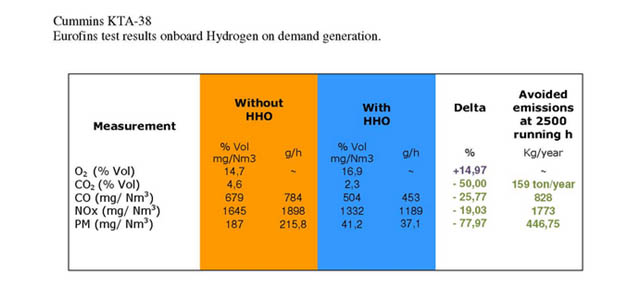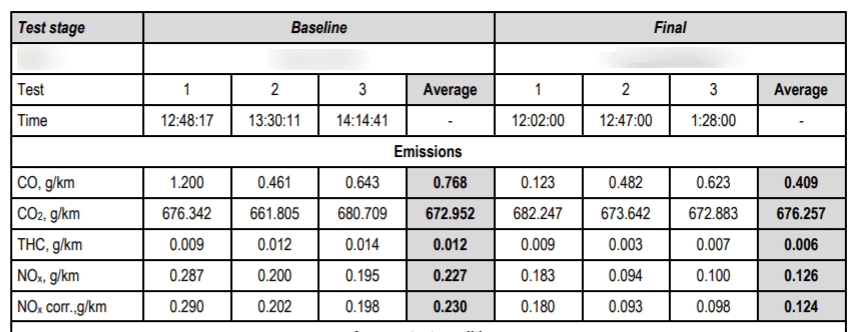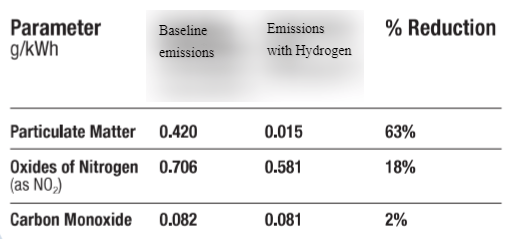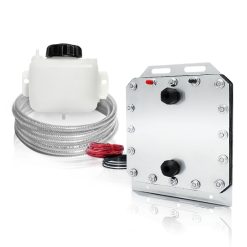No products in the cart.
Effect of Hydrogen HHO on emissions
Adding HHO to an internal combustion engine, results in a faster, more complete combustion of the existing fuel.
Faster and more thorough combustion means that more energy is transferred mechanically to the engine, instead of wasted heat through the exhaust. This has a positive impact not only on power and fuel economy, but also in emissions (as exemplified in the test report by *Eurofins below).
The much faster flame propagation speed of hydrogen is responsible for this and is often compared to a giant “spark plug” in the engine that ignites all the combustible fuel.
In summary, vehicle emissions are mostly comprised of 5 gases (the 6th is applicable to diesel fueled engines):
1. HC
2. O2
3. CO
4. CO2
5. PM
6. NOx
1. HC – Hydro Carbons are essentially unburned particles of fuel that are passed through the entire engine, through the exhaust and into the atmosphere. This is the gas that accounts for smog in our cities. Hydrocarbons are typically reduced by 30-40%.
2. O2 – Oxygen is NON-POLUTING and necessary for our existence. Note the significant increase of clean oxygen as measured by 5-gas analyzers.
3. CO – Carbon Monoxide. This clear, odorless yet deadly gas gets reduced in the range of 25-50%.
4. CO2 – Carbon Dioxide, responsible for the “green house” effect on our planet is typically decreased by 40-60%
5. PM – Particulate Matter is the “solid particles and liquid droplets” in the exhaust of diesel engines, more commonly referred to as “soot”. As HHO is directly responsible for a more complete combustion, this emission is drastically reduced. 70-80% reductions are commonplace, with frequent reports of 90%+.
6. NOx – Nitrogen monoxide and additional oxides are responsible for the “acid rain” pollution that is apparent in metro areas such as Los Angeles.
NOx emissions are very strongly related to combustion temperature.
As combustion temperatures exceeds 1527C (2870F), oxides of nitrogen are formed, and any increases in temperature will result in substantially higher emissions.
When HHO is added to the engine, the resultant cooler combustion temperature helps lower this particular nauseous gas.
Reductions of 20-25% of NOx are common in diesel engines. Typical reductions in gasoline vehicles are 50%. Results as great as 95% been reported in lean burning applications such as highly tuned gasoline and natural gas engines seeking large increases in fuel economy.
*Eurofins is an international group of laboratories headquartered in Luxembourg, providing testing and support services to the pharmaceutical, food, environmental and consumer products industries and to governments.
Read more:
How hydrogen generators for vehicles work
How to select correct equipment
Setup and operation of HHO equipment, safety, compatibility
Engine carbon cleaning services vs hydrogen on demand generators
Results of NASA’ s experiments with hydrogen in internal combustion engines
How to convert engines to use hydrogen as primary fuel
What happens when too much hydrogen is supplied to an engine
Visit our store
Summary
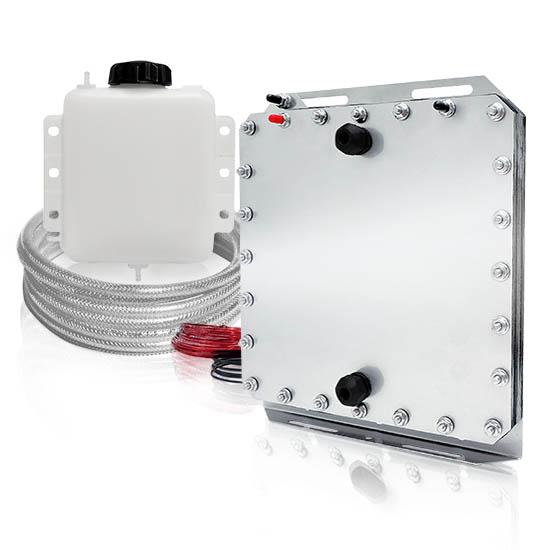
Article Name
Effect of Hydrogen HHO on emissions
Description
Adding HHO to an internal combustion engine, results in a faster, more complete combustion of the existing fuel.
Faster and more thorough combustion means that more energy is transferred mechanically to the engine, instead of wasted heat through the exhaust.
This has a positive impact on power, fuel economy and emissions.
Reduction of NOx, CO2 Carbon Dioxide, CO Carbon Monoxide, PM Particulate Matter
Author
Better Fuel Technology
Publisher Name
Better Fuel Technology
Publisher Logo







